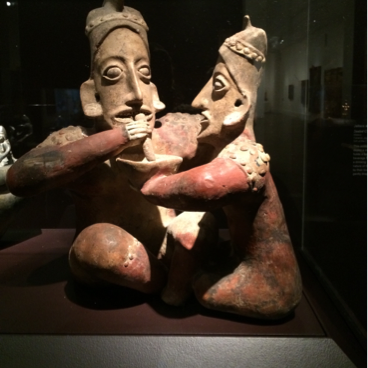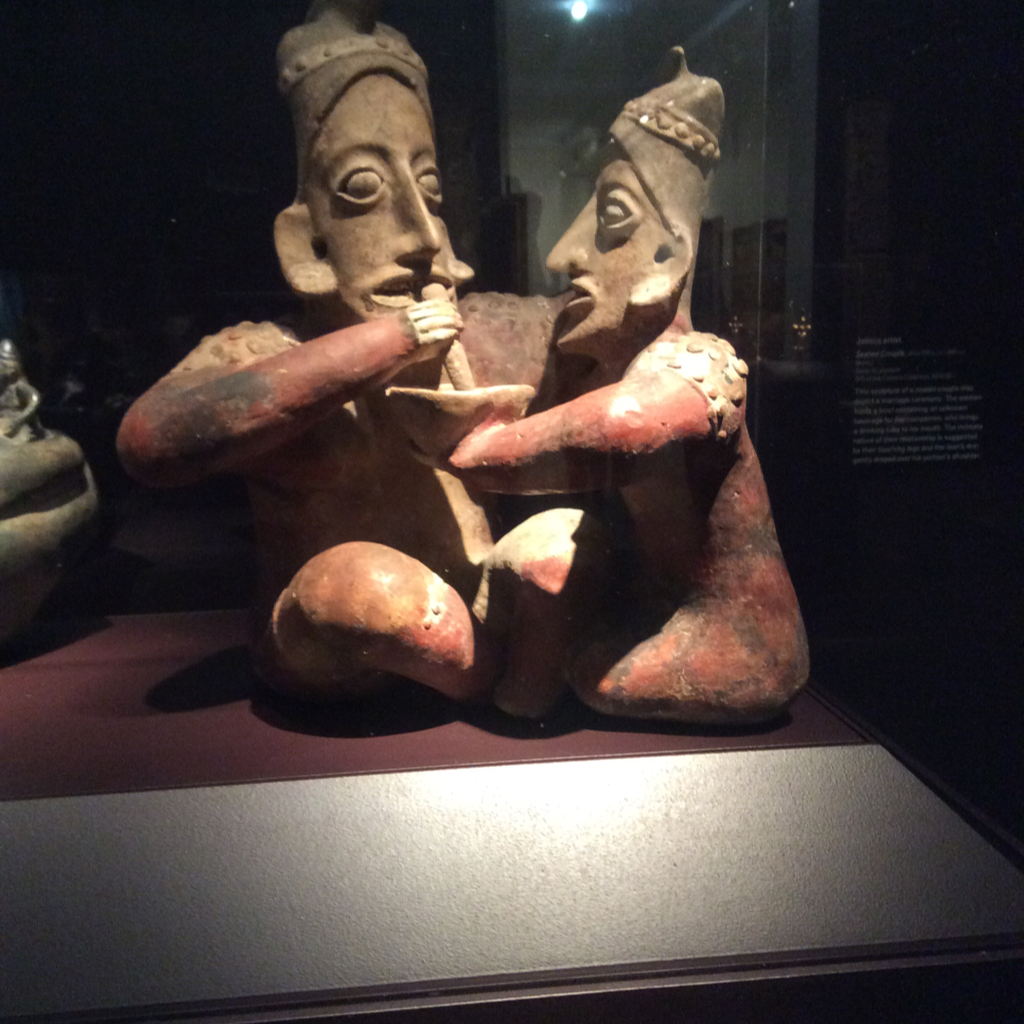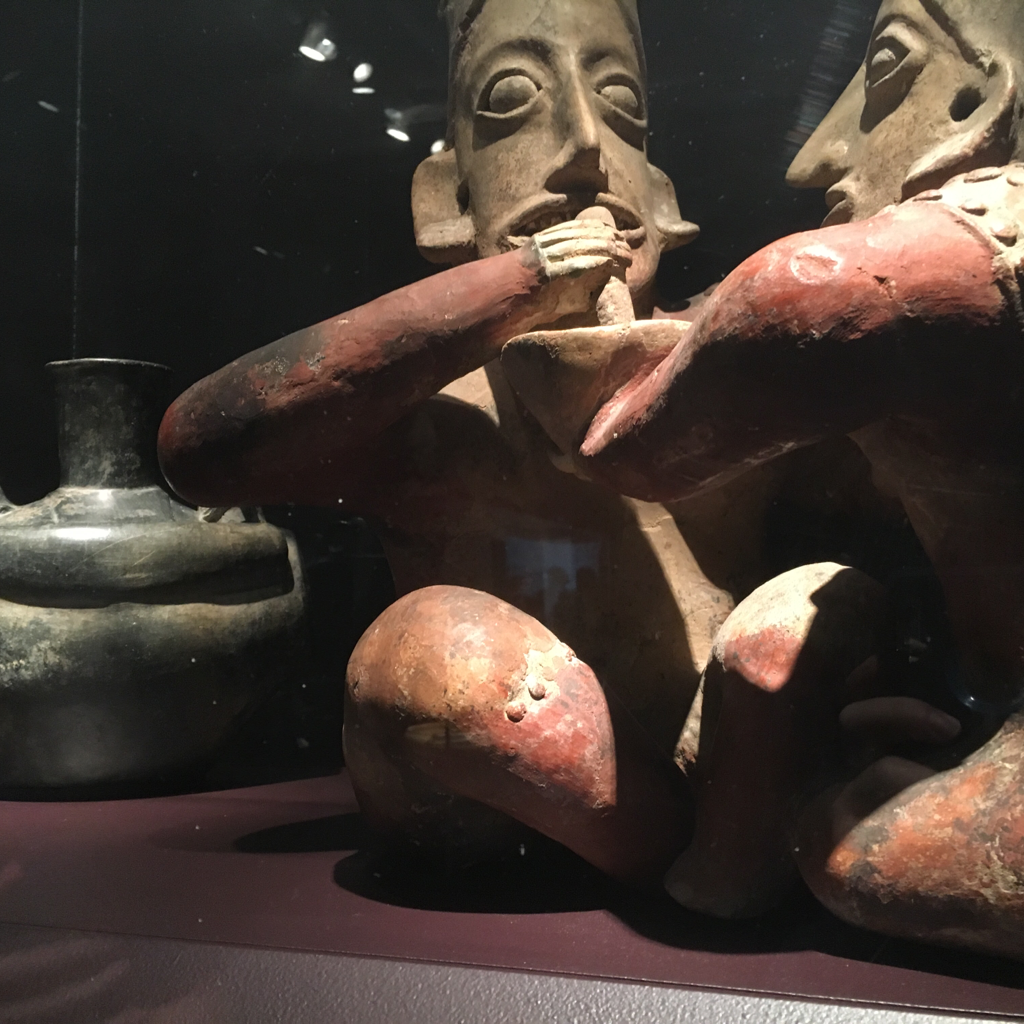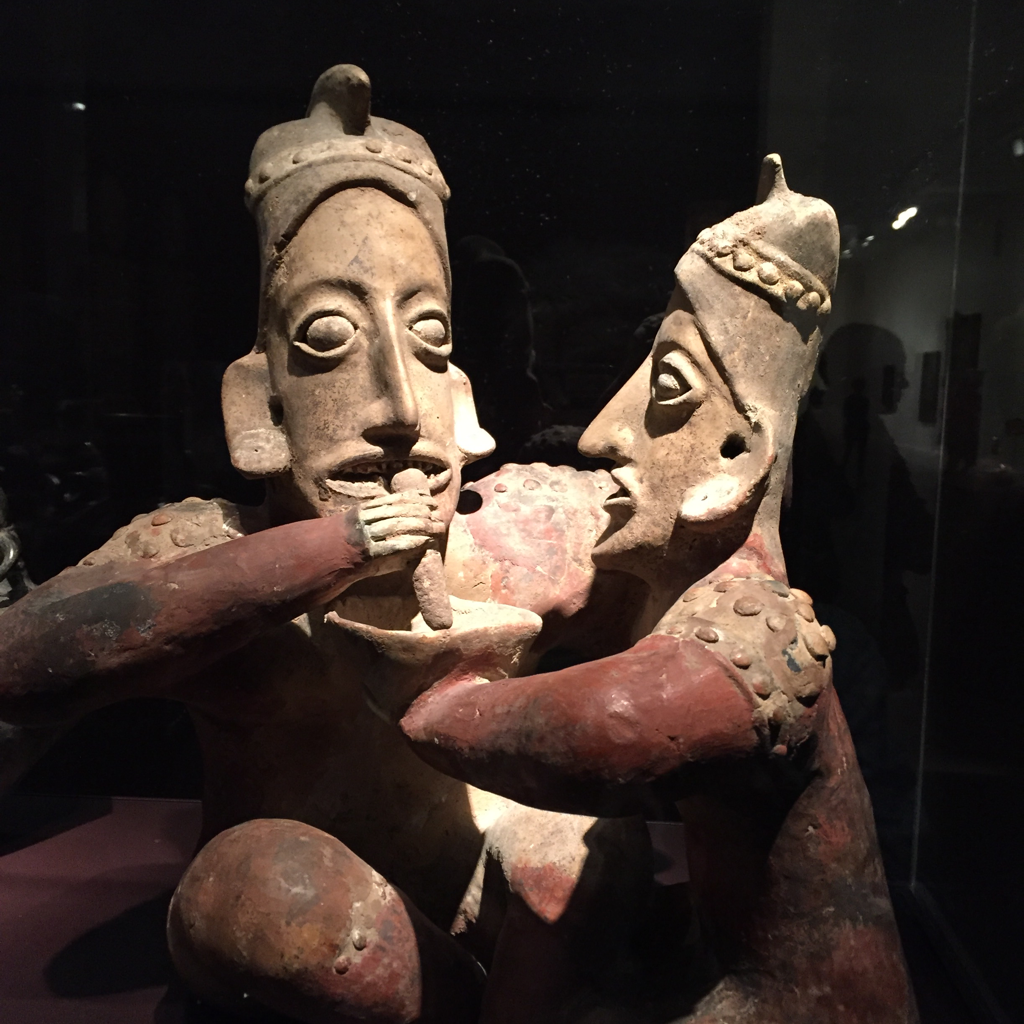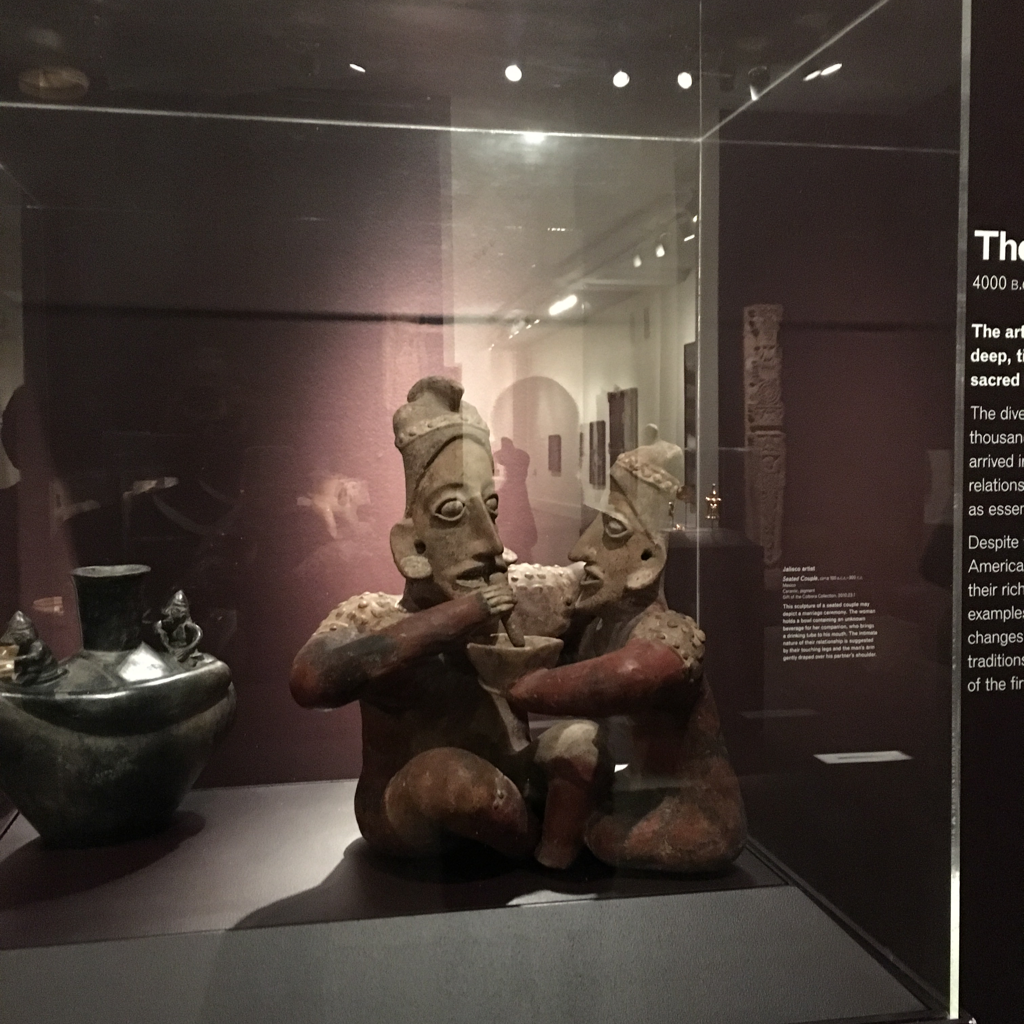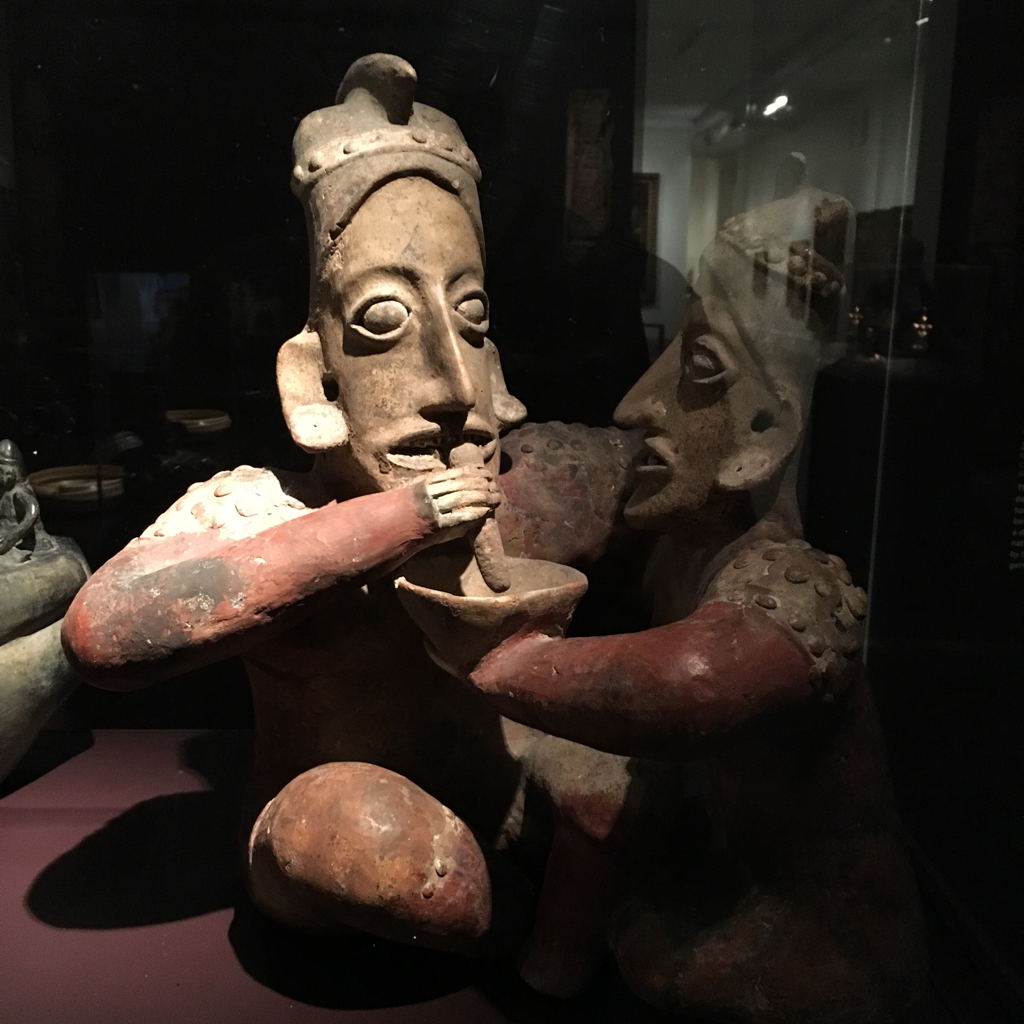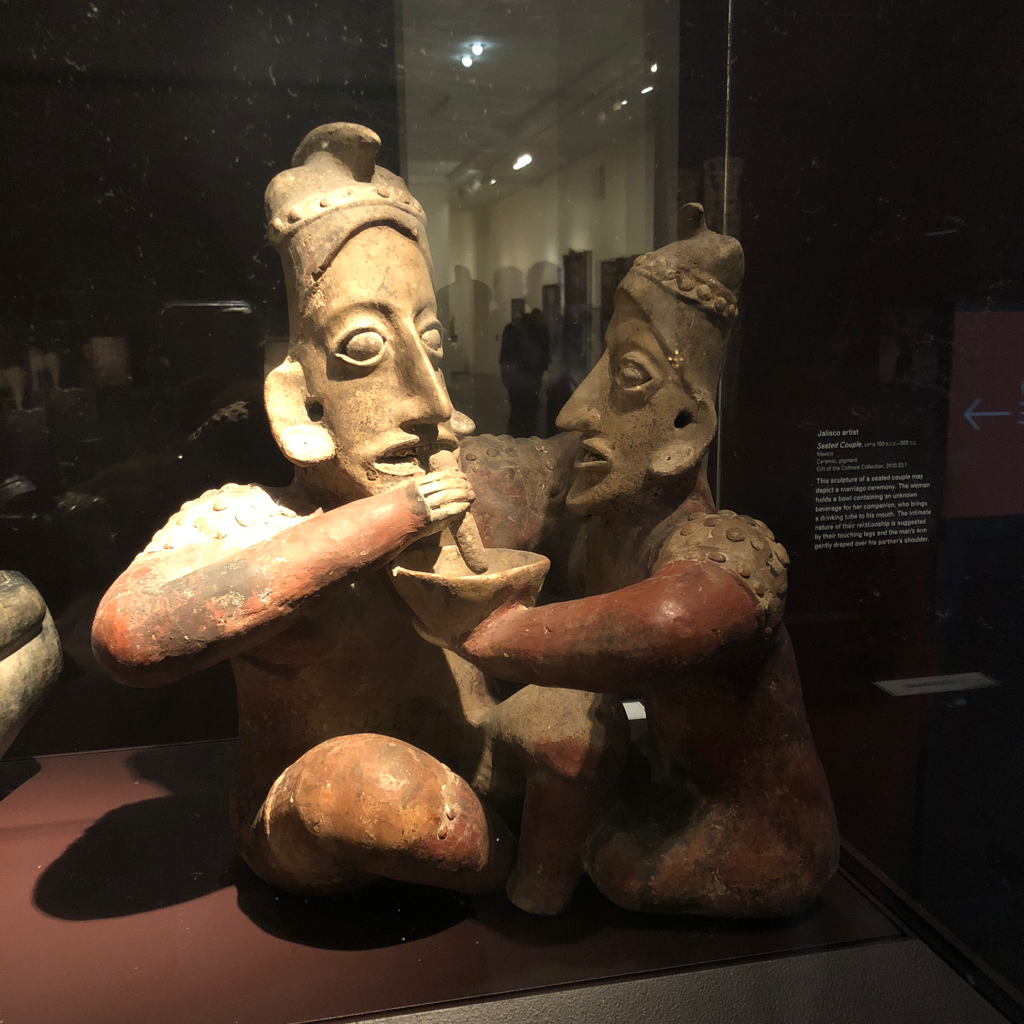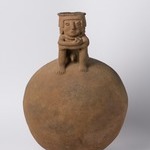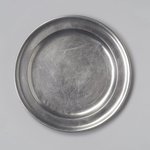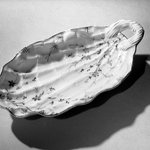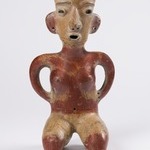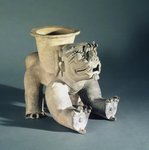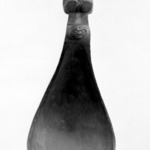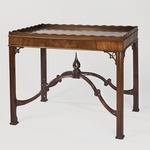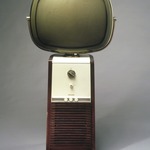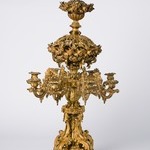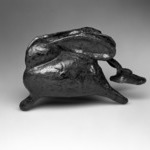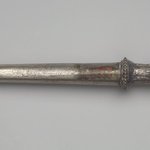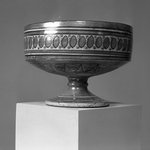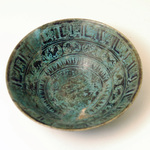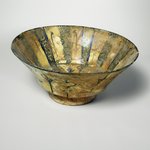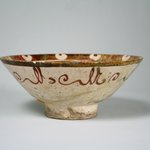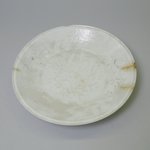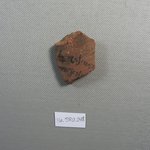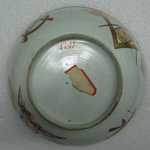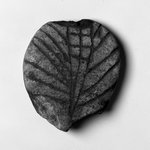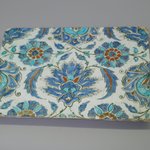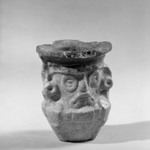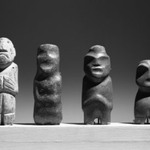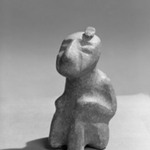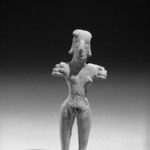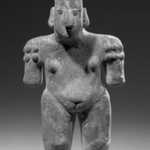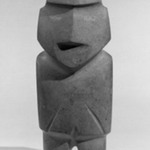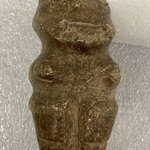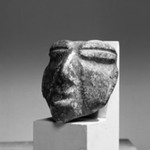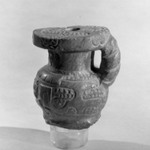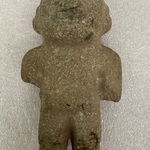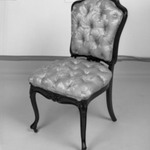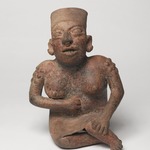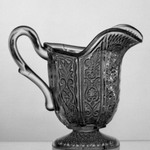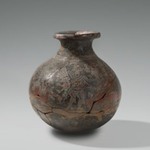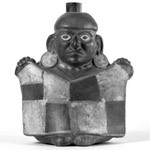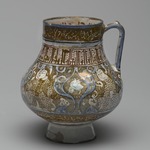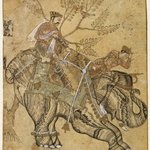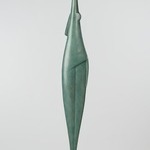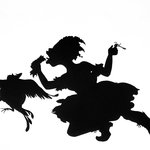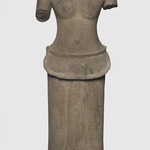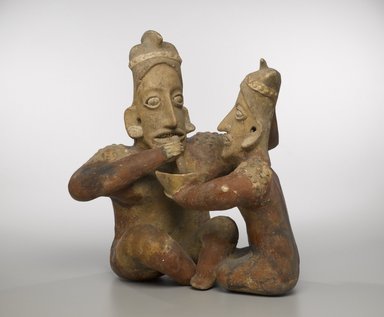
Seated Couple
Arts of the Americas
This sculpture of a seated couple may depict a marriage ceremony. The woman holds a bowl containing an unknown beverage for her companion, who brings a drinking tube to his mouth. The intimate nature of their relationship is suggested by their touching legs and the man’s arm gently draped over his partner’s shoulder.
CULTURE
Jalisco
MEDIUM
Ceramic
DATES
ca. 100 B.C.E.–300 C.E.
DIMENSIONS
17 1/2 x 15 1/4 x 10 in. (44.5 x 38.7 x 25.4 cm) (show scale)



COLLECTIONS
Arts of the Americas
ACCESSION NUMBER
2010.23.1
CREDIT LINE
Gift of the Coltrera Collection
CATALOGUE DESCRIPTION
Seated man and woman joined at the legs and facing each other. The woman holds a bowl for her companion, who brings a drinking tube to his mouth. One of the man's arms is gently draped over the woman's shoulder. This sculpture is in the Ameca-Etzatlán style which is characterized by elongated heads; large, carved eyes; straight, naturalistic noses; and open mouths displaying incised teeth. The elongated heads are consistent with cranial deformation - the flattening of the infant's cranium - which was probably a sign of prestige. Both figures wear almost identical hair styles or headdresses with a headband decorated with appliqué dots. Additional adornments include earspools, leg bands (on the man), a skirt (on the woman), and appliqué dots on the shoulders possibly representing decorative scarification.
Condition: good; some surface abrasions and chips.
MUSEUM LOCATION
This item is not on view
CAPTION
Jalisco. Seated Couple, ca. 100 B.C.E.–300 C.E. Ceramic, 17 1/2 x 15 1/4 x 10 in. (44.5 x 38.7 x 25.4 cm). Brooklyn Museum, Gift of the Coltrera Collection, 2010.23.1. Creative Commons-BY (Photo: Brooklyn Museum, 2010.23.1_PS6.jpg)
IMAGE
overall, 2010.23.1_PS6.jpg. Brooklyn Museum photograph, 2011
"CUR" at the beginning of an image file name means that the image was created by a curatorial staff member. These study images may be digital point-and-shoot photographs, when we don\'t yet have high-quality studio photography, or they may be scans of older negatives, slides, or photographic prints, providing historical documentation of the object.
RIGHTS STATEMENT
Creative Commons-BY
You may download and use Brooklyn Museum images of this three-dimensional work in accordance with a Creative Commons license. Fair use, as understood under the United States Copyright Act, may also apply.
Please include caption information from this page and credit the Brooklyn Museum. If you need a high resolution file, please fill out our online application form (charges apply).
For further information about copyright, we recommend resources at the United States Library of Congress, Cornell University, Copyright and Cultural Institutions: Guidelines for U.S. Libraries, Archives, and Museums, and Copyright Watch.
For more information about the Museum's rights project, including how rights types are assigned, please see our blog posts on copyright.
If you have any information regarding this work and rights to it, please contact copyright@brooklynmuseum.org.
RECORD COMPLETENESS
Not every record you will find here is complete. More information is available for some works than for others, and some entries have been updated more recently. Records are frequently reviewed and revised, and we welcome any additional information you might have.



